The 1-Minute Market Report is tailored for those who want a quick recap of what's going on, without the usual fluff and filler. I try to focus on the main drivers of the current market action, and offer some brief commentary along the way.
A quick summary
- The employment report was so unexpectedly good that there is now a rising probability (36%) of a half-point rate hike in March.
- The S&P 500 rallied 1.5% last week, but we're still not out of the woods.
- As of Friday, the S&P 500 is down 5.6% year-to-date.
- We are in a rolling bear market, with 45% of all stocks down 20% or more.
- The proximate causes are the hawkish tone of the Fed, surging inflation, omicron, and now a potential shooting war with Russia.
- There are pockets of resistance amongst the broader carnage .
Markets are down, but some pockets bucked the trend.
Chart 1. Major Indices
Commodities, volatility, precious metals, and Asia big caps are the only major indices to gain ground year-to-date. Hardest hit are companies tied to crypto, the tech-heavy NASDAQ, and the small-cap Russell 2000.
Commodities are being driven primarily by oil and natural gas, but agriculture and industrial metals are also doing well this year.
Chart 2. S&P 500 Sectors
Energy has continued its strong performance from last year, gaining 22.7% YTD. Defense stocks are getting a boost from the threat of a new shooting war.
Financials are benefitting from higher Treasury bond rates and the soon-to-be-implemented short-term rate increases. This allows banks to charge more for loans. Their commercial lending activity is benefitting from an increase in capital expenditures for supply chain improvements.
Construction and retail are in the basement, thanks to fears of a Fed-induced recession and a temporary slowdown in shopping due to the omicron surge.
Chart 3. Equity Groups
This chart shows the performance of stocks that share certain characteristics, like value vs. growth, large vs. small cap, and cyclical vs, defensive. I created these groups to offer a way of visualizing the flow of investor money - where it's going and where it's coming from.
Following the money removes much of the subjectivity embedded in forecasting what may happen in the future. I want to see what's happening now. and whether a trend is being established.
The most noteworthy trend is how far Big Tech has fallen year-to-date, after leading the market last year. Investors continue to rotate out of growth and into value, and they are gravitating towards non-US markets.
Chart 4. Industries
Zacks Investment Research tracks 60 different industry groups, and that is where the next chart comes from. I won't bore you with the entire chart of all 60 groups, but instead show the largest 28. It's no surprise that Big Oil is the leader by a wide margin. Semiconductors come in last place.
Chart 5. Stock winners
The final two charts drill down into the specific stocks that have gained and lost the most year-to-date. 9 of the 10 top performers are involved in the oil business. This looks like a durable trend, and not just an oversold bounce or a reaction to the Russia-Ukraine tensions.
Chart 6. Stock losers YTD
Six out of the ten biggest losers YTD are from the healthcare sector. Investors had been pricing in continued sales and earnings growth for the drug manufacturers, but it appears that growth acceleration may have peaked.
Final Thoughts
After taking a 2.44% hit on Thursday, the the dip-buyers once again stepped in to close the week on an up note. They lost the fight to defend the 5% pullback marker, and now must make a stand to defend the 10% correction line. They succeeded this week, but will they hold the line the next week? The aggressive rally-sellers will surely test them.
If they remain true to form, the dip-buyers will eventually take the market to a new high, but I don't think we've seen the bottom yet. I'm betting that the 10% level will be breached, and they will have to start the march to a new high from a lower low.

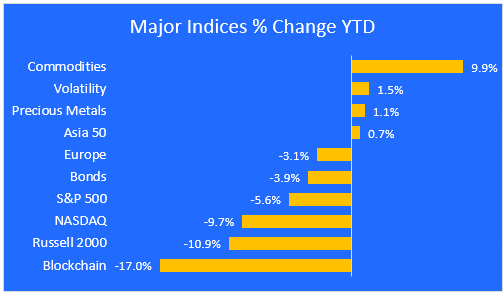
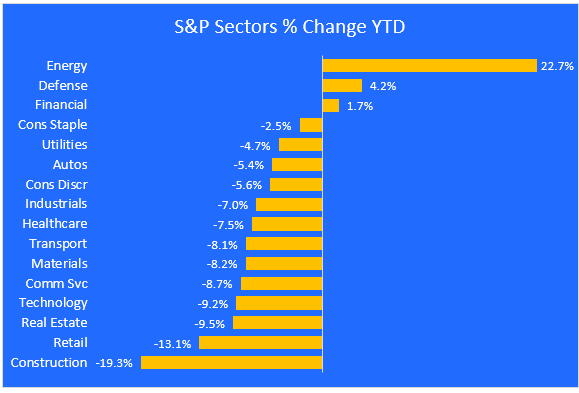
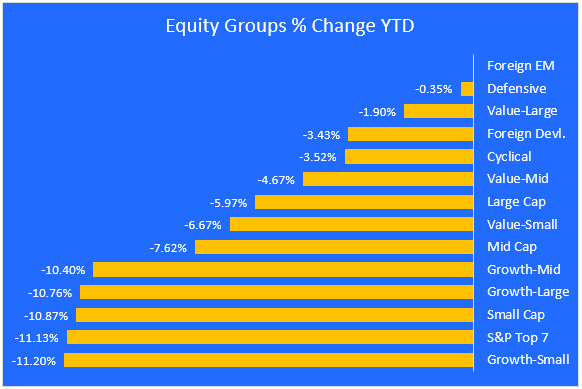
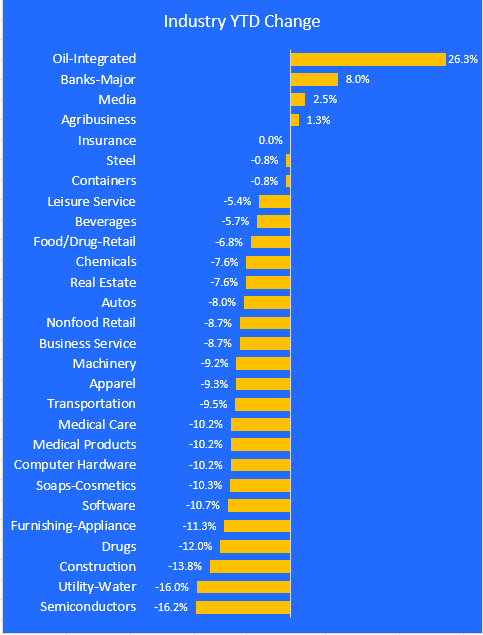
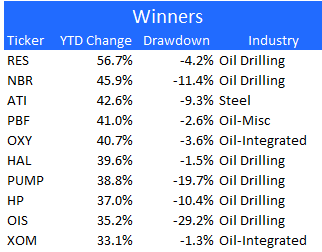
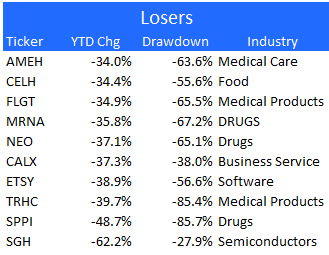
The s&p 500 marked a ytd low down 11.07% last week of January. Are you saying this will happen a second time before the dip-buyers take us to a new high?
Yes, I think it is likely but not guaranteed. We might get as far down as 15% before this volatility works its way out.